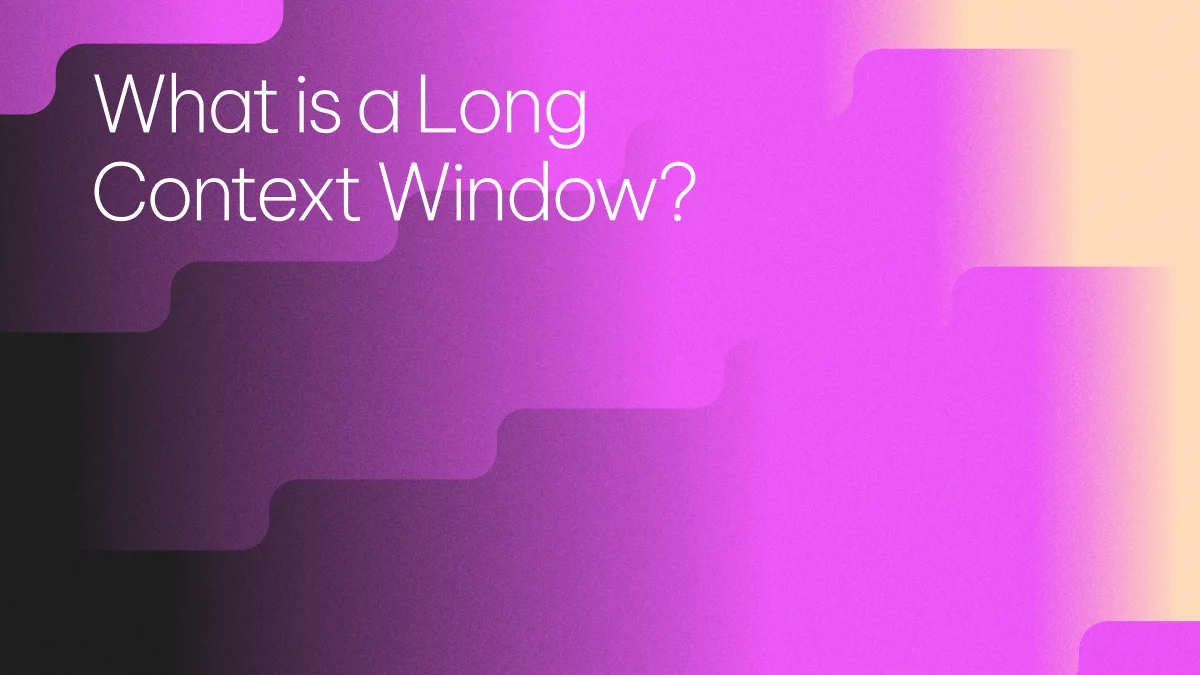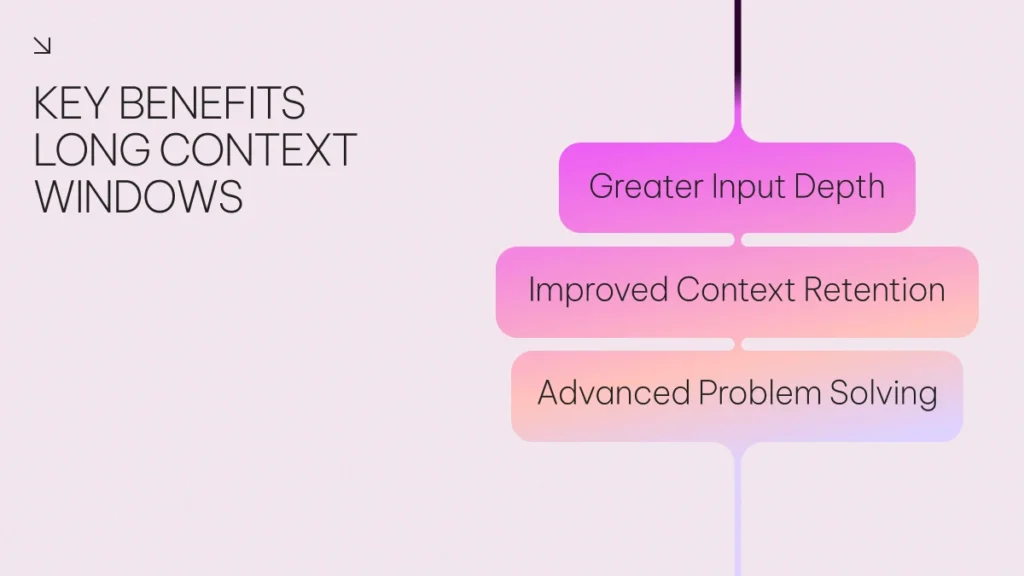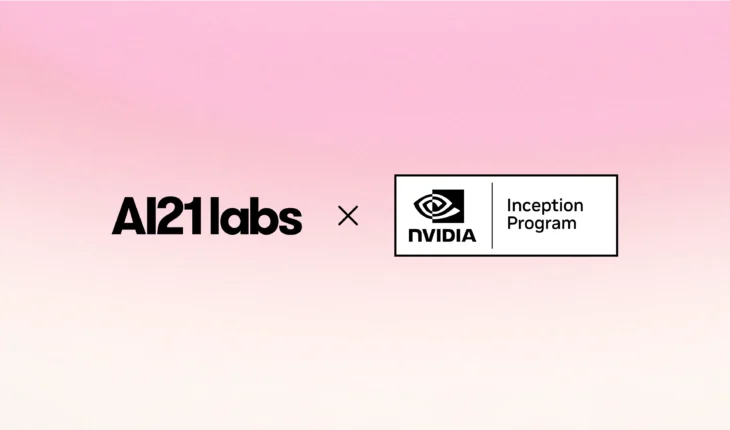Table of Contents

What is a Long Context Window? Benefits & Use Cases
Enterprise adoption of AI is accelerating, with executives using Large Language Models (LLMs) and generative AI to improve customer experience, retention and revenue growth.
However, language models can struggle to maintain accuracy and relevance over extended prompts. When documents become lengthy or conversations span multiple interactions, model performance often declines, and memory limitations can lead to hallucinations, degraded output quality, and rising computational costs.
One of the most critical factors influencing model effectiveness in these scenarios is the context window — the amount of text (measured in tokens) a model can consider at once.
A larger context window increases the likelihood of generating high-quality outputs when handling longer sequences. However, because long context windows are priced based on token usage, enterprises must carefully weigh the trade-offs between context length, output quality, and cost for their specific use case.
In this article, we’ll explore long context windows, why they matter in LLMs, and how to evaluate them based on enterprise needs.
What is a long context window?
A long context window refers to the amount of data — measured in tokens — that a language model can process within a single prompt.
Each model has a different context capacity, often described as its “working memory,” which determines how much information it can consider at once. As enterprise use cases become more complex, from analyzing lengthy financial reports to processing detailed patient records, context windows need to scale accordingly.
Historically, most models supported context windows of 4,000 to 8,000 tokens. Today, leading models support windows of hundreds of thousands — and in some cases, up to a million tokens — enabling more sophisticated document analysis, conversation continuity, and long-form content generation.
Why are context windows important in LLMs?
Context windows are critical in LLMs because they define the amount of information the model can consider when generating a response.
A smaller context window limits the model’s ability to retain relevant input, which can result in earlier parts of a conversation or document being “forgotten” within the same session. This can lead to hallucinations — confident but inaccurate answers — and user frustration.
For enterprise use cases that involve analyzing lengthy documents, large codebases, or retrieving information across complex datasets, a longer context window enables more accurate and contextually consistent outputs. It allows the model to process broader input without losing track of key details.
Without a sufficiently large context window, organizations risk generating incomplete or misleading responses — a critical concern in high-stakes industries like finance, healthcare, and retail, where accuracy and context are essential.
How are long context windows measured?
Long context windows are measured in tokens — the smallest units of data that a language model processes. Most language models account for both input and output tokens when calculating usage, which can affect performance and cost depending on the provider.
Tokenization is the process of breaking input data — typically text — into these discrete tokens. The method of tokenization varies across models and providers, but in general, a token can represent a character, a full word, or a segment of a word. On average, one word in English equates to roughly 1.5 tokens, although this can vary based on language, structure, and the tokenizer used.
For example, the word email might be tokenized as:
- A whole word (email)
- A word fragment (mail)
- A prefix (e)
- Individual characters (e, m, a, i, l)
Each model has a defined context window — the maximum number of tokens it can process in a single prompt. This window limits how much information can be considered at once, including user inputs, retrieved documents, and the model’s own responses.
While larger context windows offer the ability to process more data at once — such as longer documents, multi-turn conversations, or dense technical content — they also come with trade-offs.
Efficient tokenization strategies, like subword-based encoding, can help reduce memory usage and improve performance when working with large input sizes. These optimizations are especially important in enterprise applications where speed, cost, and accuracy are critical.
What takes up space in a context window?
A context window can fill up surprisingly quickly. Even simple prompts may contain multiple elements that count as tokens — including characters, punctuation, formatting, and whitespace.
Because a token can represent anything from a single character to a whole word or subword, it can be difficult to predict exactly how much space a prompt will occupy. However, three main areas typically contribute to token usage: language, code, and formatting.
Language
Languages that use more words to express the same idea will naturally consume more tokens.
For example:
- English: The quick brown fox jumps over the lazy dog → 9 tokens
- French: Le renard brun rapide saute par-dessus le chien paresseux → ~10–11 tokens
The difference becomes more pronounced across larger text volumes or when working with multilingual content.
Code
Code is treated as plain text and is tokenized accordingly — including every space, tab, and indentation. Structured syntax, repeated elements, and verbose expressions can all increase token count significantly. This is important for use cases like code generation or log file analysis, where formatting carries meaning but adds to the cost.
Formatting
Tokenization is model-specific and language-dependent, meaning even subtle formatting changes can affect token count. Variations in capitalization, punctuation, or extra spaces — especially leading or trailing ones — can lead to different tokenization patterns. Over time, these small differences can have a significant impact on cost and context window usage.
One way to address the limits of fixed context windows is through Retrieval-Augmented Generation (RAG). Rather than trying to fit all relevant data into a prompt, RAG dynamically retrieves information from external knowledge bases and feeds only the most relevant snippets into the model.
When paired with a longer context window, RAG systems can provide more targeted, purpose-fit responses by maximizing relevant input while minimizing token waste. This makes them particularly valuable in enterprise scenarios where content is extensive — such as policy documentation, product catalogs, or clinical guidelines.
Key benefits long context windows
As enterprise applications of LLMs grow in complexity, long context windows offer clear advantages:
- Greater Input Depth: Longer context windows allow models to process more information at once — including full documents, multiple inputs, or extended prompts — without needing to segment or truncate the content. This is especially valuable for use cases like legal contract analysis, patient record review, or financial report parsing.
- Improved Context Retention: With the ability to maintain continuity across longer interactions, models can engage in more coherent, multi-turn conversations. This leads to better performance in tasks such as customer support, meeting summarization, or case management.
- Advanced Problem Solving: Retaining a broader scope of input allows models to reason over more complex relationships and dependencies — whether across multiple documents, data sources, or phases of a conversation.
When used effectively, long context windows increase the model’s ability to provide relevant, accurate, and task-specific responses — without relying solely on retrieval strategies or prompt engineering to bridge information gaps.

Key Challenges of Long Context Windows
Despite their benefits, long context windows also introduce technical and operational trade-offs:
- Increased Computational Load: Processing large volumes of tokens requires more memory and compute power. This can lead to longer response times, higher infrastructure costs, or throttled throughput in high-demand environments.
- Performance Degradation: Simply increasing the amount of input doesn’t always lead to better output. Feeding too much or loosely relevant information into a model can dilute its focus and, in some cases, result in degraded performance.
- Higher Risk of Hallucinations: When overloaded with information, models may struggle to identify what is most relevant, increasing the risk of hallucinations or incorrect inferences, particularly in complex decision-making scenarios.
- Security and Privacy Considerations: Larger input windows increase the surface area for potential data exposure. Sensitive content included in prompts may inadvertently be processed or cached, making secure prompt design and access control even more important.
Because context windows function as a model’s “working memory,” enterprises must align window size with the task’s true demands. This is particularly important for applications involving long-form content, multi-document workflows, uncommon languages, or extended conversational threads.
Long context windows use cases in the enterprise
As we’ve explored, long context windows in large language models (LLMs) can enable complex, data-heavy tasks that were previously difficult to automate or scale. By allowing models to process large volumes of information in a single prompt, they unlock new opportunities for accuracy, efficiency, and deeper insights across enterprise workflows.
Here are just a few examples.
Extracting medical insights
In the healthcare and life sciences sectors, long context windows are particularly useful for synthesizing detailed, domain-specific content. For instance, Investigator Brochures (IBs) for clinical trials often span 100 to 200 pages and include prior research, risk data, and trial protocols.
Long-context models can process these documents in full, extracting key points for healthcare providers and summarizing patient-relevant information in accessible language.
Similarly, clinical trial interviews — which may generate transcripts of 10,000 tokens per hour — can be analyzed in aggregate. A context window of 256,000 tokens can accommodate transcripts from approximately 25 interviews, enabling cross-participant analysis that helps surface patterns, outliers, and insights — without the manual burden or risk of human error.
Smart financial summaries
Financial professionals often rely on extensive documentation to assess company performance, including annual reports, earnings call transcripts, and regulatory filings. A typical corporate financial report can span 100 pages or around 30,000–35,000 tokens.
With a long context window, a model can ingest multiple years’ worth of reports in a single pass — enabling it to identify trends, evaluate financial health, or benchmark companies side by side. This kind of analysis supports faster, more informed investment and risk decisions.
Long context windows also enhance the analysis of call transcripts, allowing models to summarize key points from investor briefings or financial reviews, identify changes in sentiment, and compare commentary across multiple sessions.
Improved retail assistants
Customer-facing chatbots in retail often struggle with fragmented memory and hallucinations — especially when context is lost between turns or documentation is too lengthy to process all at once.
Long context windows allow virtual assistants to reference extensive internal knowledge bases, such as help center articles, product documentation, and past interactions — all within a single session. This enables more personalized, consistent, and accurate support.
For example, a retail assistant could provide troubleshooting advice based on a detailed installation guide, remember prior questions a customer asked about shipping policies, and tie that context together to deliver a cohesive customer experience — all without escalating to a human agent.
Best practices for working with long context
While long context window capabilities are a valuable feature, they shouldn’t be the sole deciding factor in your enterprise AI strategy.
Real-world performance often diverges from benchmark numbers. Advertised token capacities represent theoretical maximums, but in practice, performance depends on the quality, structure, and relevance of the input data. Long context windows are not a guarantee of higher accuracy or reasoning quality.
To get the best results, it’s important to structure inputs thoughtfully. Prompts should be clear, concise, and free of irrelevant or redundant content. Adding too much low-value information can quickly overwhelm the model and degrade output quality, even if it fits within the context window.
Prompt structure matters. Placing the most important or time-sensitive information at the beginning of the prompt — sometimes referred to as “prompt priming” — can lead to more accurate and relevant responses. This is especially important in scenarios like legal analysis, financial summaries, or policy interpretation, where order and emphasis influence output.
What’s next for context windows in AI?
The trajectory for context windows is trending upward — newer models continue to support increasingly large token capacities. But longer context is only part of the evolution.
As adoption grows, so too will awareness of the limitations of large context windows. The conversation is shifting from how long a model’s memory is to how effectively that memory is used. Effective context length — the portion of the window that actually influences the output — is emerging as a more meaningful metric.
We’re likely to see continued improvements in model architecture, including:
- Better use of long-context attention mechanisms
- Hybrid strategies combining RAG (Retrieval-Augmented Generation) with long-context capabilities
- More efficient tokenization and routing techniques to reduce overhead and increase signal-to-noise ratio
Enterprises will benefit most from systems that balance retrieval, memory, and reasoning — not just scale for its own sake. Research will keep pushing boundaries, especially as more organizations explore how to integrate LLMs into complex, document-heavy workflows.
FAQs
-
A long context window refers to the maximum number of tokens a model can consider at once, across both input and output. This allows language models to process longer documents, hold more context in a single session, and support more complex reasoning — though output quality still depends on input clarity and relevance.
-
Longer context windows require the model to process more data, which increases computational overhead. This often results in slower response times and higher costs, particularly for large-scale or latency-sensitive applications.
-
Token length refers to the number of tokens in a specific prompt or response. Context window refers to the maximum number of tokens — including both prompt and output — that a model can process at once. If the total token count exceeds the context window, earlier content may be dropped or truncated.


